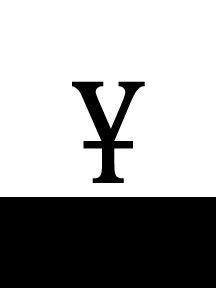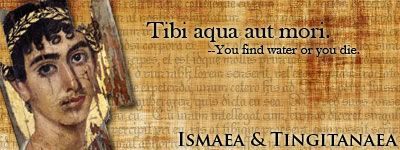Post by Ismaea & Tingitanaea on Jun 4, 2012 22:37:33 GMT -5
Iesinorism and the Iesinorene Church

Foundations: The Life of the Blessed Iesinor (91-101 C.E.)
And so from amongst the people arose a tall and handsome youth, who shared with them his message from The One God. The name of this youth was Iesinor.” -- Evangelion 1:34
The origins and parentage of Iesinor are a subject of dispute within the current Iesinorene Church, with some sources locating his birthplace in the village of Matara (in the Blessed Isles)while others claim Tiberios as his true hometown. The scriptures themselves make no mention of Iesinor’s early life, beginning the story instead with the annual festival in the market town of Vaperdum. The attendant priests of the town pantheon made the customary sacrifices to the gods, but despite many attempts were unable to burn the sacrifices in the consecrated fire. A crowd formed, and as the fire still refused to light mutterings began that this was a sign of disfavor from the gods. It was at that moment a young man stepped forward and boldly proclaimed to those assembled that the sacrifice could not be consecrated until it was done in the name of the One God. This he did, and the flames caught immediately. As the sacrifice burned on the altar behind him, the youth announced to his audience that he bore a message from the One God for all the peoples of the world. His name was Iesinor.
In the ten years after the Miracle at Vaperdum, Iesinor traveled from island to island in the Blessed Isles, healing the sick and performing miracles while preaching to growing crowds of eager listeners. His message was simple: the relationship between humanity and the divine was rotten, with men praying to gods only for favors and they dispensing them like tyrants rewarding their followers. The One God was no lord or tyrant but instead a judge, who does not play favorites but instead acts to punish the wicked and reward the righteous. By living a good life and performing good works, those who placed their trust in the One God could expect to receive their reward in this life or in the world to come.
Iesinor's words and deeds spread quickly, and it was not long before his ministry numbered into the hundreds and his followers could be found throughout the Blessed Isles. It was during this time that new prefect was appointed to administer the diocese, a man named Gorgrosios whose arrogance and cruelty soon became intolerable to the Blessed Islanders. Some rebelled, and Gorgrosios responded with unimaginable brutality. In desperation the rebels sought out Iesinor, hoping he would join their rebellion or pray to his God on their behalf.
Iesinor refused to do either thing, and instead decided to travel to Meshuthia to see Gorgrosios himself and convince the prefect to change his ways and do God's work. Knowing how dangerous his task would be, one hundred of his ministry stepped forward to come with him and be his bodyguards, but Iesinor dissuaded them. "I rejoice to offer my life for others - Knowing my soul will be God's" (Evangelion, 15:7). From among their number he chose the seven cleverest and most devout to travel to all the dioceses of Amoraean Empire to spread the Word. With that he set off to Meshuthia.
Gorgrosios had heard of Iesinor and knew of his powers and the popularity of his message among the common people. He therefore so received Iesinor with great honors in the prefect's palace, seeking to flatter Iesinor with lavish gifts and high praise. Iesinor remained unmoved, however, and denounced the foul deeds of Gorgrosios before his court. Only by repenting before the One God and leading a righteous life, Iesinor declared, could Gorgrosios hope to avoid God's punishment and achieve His reward. The prefect's anger had been growing as he listened to Iesinor, and now he flew into a rage and demanded that Iesinor publicly declare his support for Gorgrosios or be killed.
This Iesinor refused, and so Gorgrosios had Iesinor seized and ordered his guards to cut Iesinor with their swords. This they did three times, with Gorgrosios repeating his demand after each cut. Three times, however, Iesinor still refused, and three times he pleaded with Gorgrosios to cease his evil deeds and save his soul from God's judgment. The prefect would hear none of it and ordered him to be cut again, but the guards were moved by Iesinor's bravery and devotion and refused. In a blind fury Gorgrosios drew his own sword and struck Iesinor a fatal blow. With his dying breath Iesinor called out to God and begged His forgiveness for being unable to change Gorgrosios's heart. The prefect turned away in disgust, but his foot slipped in the puddle of Iesinor's blood and so Gorgrosios fell upon his own sword, dying alongside Iesinor on the palace floor (Evangelion, 24:48)
Growing the Flock: The Spread of Iesinorism (101 - 410 C.E.)
As the Evangelion describes, Iesinor prepared his followers to carry on his work after his death, and in the succeeding decades Iesinorism grew in the Blessed Isles and spread to other parts of the Empire. Imperial policy toward the spreading faith was uncertain and inconsistent, with some emperors and provincial administrators persecuting the Iesinorenes even as others ignored or even supported them. The worst persecution occurred during the reign of Emperor Romanos III Coprocephalos (r. 178-185 C.E.), but after his assassination officially sanctioned action against the Iesinorenes declined.
The main point of tension between the Iesinorene Church and the Imperial authorities rested in the dispute among Iesinorenes over the status of the Amoraean gods. Iesinor himself had been been unclear what relationship other gods had with the One God, and many Iesinorenes dismissed the state gods as frauds or demons and refused to accept imperial ritual or oaths. After a long period of disagreement, church elders convened a council at Accalia in 242 C.E. to debate the issue. The council's resolution was that other gods were not demons but instead only limited or imperfect human understandings of the One God. This answer did not satisfy many Iesinorenes but was accepted as palatable by Imperial authorities. Persecution ceased, and in 341 C.E. the first Iesinorene emperor Heraclios I Theophilos came to power and added the One God to Amoraean pantheon.
Retaking Lost Ground: Iesinorism Today (410 - 420 C.E.)
The sudden fall of the Amoraean Empire struck a heavy blow to the Iesinorene Church, depriving it of Imperial sponsorship and followers while triggering a religious blacklash against the faith in many areas. Today the reach of Iesinorism is shrunken from its height in the previous century, although populations of believers reside in all fragments of the former empire.
In the ten years since Amoraea's fall, the Church had gradually overcome its initial shock, consolidating itself in Tingitanaea and the Blessed Isles while dispatching missions elsewhere in the former empire to rebuild shattered congregations or to spread into new areas. Attempts have even been made to convert the Norska invaders, though success has so far been extremely limited.
The Organization and Hierarchy of the Iesinorene Church
The Iesinorene Church is organized along lines recalling those of the old empire, and governed by a hierarchy.
Frater (“Brother"): The most junior level of clergy, a frater has sufficient training to present the Iesinorene scriptures and perform the sacred rituals, but not to offer commentary or interpretation based on scripture. Fraters are most commonly found as clerical assistants, missionaries, parabalani (see below), and tending to small or isolated congregations where – in practice – they perform the function of an arbiter (see below).
Arbiter (“One who goes to judge”): In addition to the training of the frater, an arbiter spends a significant amount of time (as long as several years) in intensive scriptural and jurisprudential study, thereby qualifying them to act not only as a priest but as a judge for their congregation. The arbiter typically manages a domos, performing the necessary rites while resolving disputes in the community and enforcing holy law.
Presbyter (“Elder”): A deputy of the episcopos, a presbyter is a senior arbiter responsible for a number of congregations within a diocese. More administrative and ceremonial in duties than an arbiter, the presbyter is additionally responsible for the training (but not ordination) of new arbiters.
Episcopos (“Overseer”): the most senior position in the Church, the episcopi trace the lineage of their positions to the original seven followers sent by Iesinor to spread his word across the empire. Each episcopos has authority over one of the dioceses of the old Amoraean Empire, but due to the shifting circumstances following the empire's fall some of the episcopi naturally have more power and influence then others.
- Episcopos of the Diocese of Amoraea (formerly Aquila)
- Episcopos of the Diocese of Aquilonis Tribus (formerly Amoraea)
- Episcopos of the Diocese of Cisalpinis Tribus
- Espicopos of the Diocese of Archaea
- Episcopos of the Diocese of the Blessed Isles
- Episcopos of the Diocese of Ismaea & Tingitanaea
- Episcopos of the Diocese of Yamatai
The episcopos alone has the power to ordain arbiters and invest presbyters with their positions. All seven episcopi meet in a holy council every four years, or in times of great urgency.
Other positions:
Monastics: Iesinorism is home to several different monastic orders, each with its own particular mission and qualities. Some monks are also arbiters, but monastic orders take different vows than the regular clergy and so remain a distinct subset.
Parabalani: an order sworn to care for the sick and provide for the burial of the dead, the parabalani have come to act as the guardians of Church, serving as the bodyguards of the episcope and fighting the Church’s enemies in the streets.
Scriptures:
The Evangelion (“Good News”): A synopsis of the life, teachings, and death of Iesinor, the Evangelion contains within it the core of the Iesinorene Church. It is the text with which most of the laity and lower clergy are most familiar.
The Lectio Dei (“Recitations of God”): A massive text contained in several volumes, the Lectio Dei records the complete teachings and sayings ascribed to Iesinor along with numerous commentaries by Iesinorene clerics. This text is the source of Iesinorene holy law and jurisprudence.
Important Terms (To be added as necessary):
Dissenters: Refers to Iesinorenes who reject the conclusions of the Council of Accalia and consider all other gods to be demons and foes of the One God. Once marginalized, the fall of the Amoraean Empire and weakening of Iesinorene orthodoxy has seen a subsequent resurgence of Dissenter thought.
Domos: Meaning “House” (as in “House of God”), this term refers to any place of exclusive Iesinorene worship. Increasingly, the term is also associated with the congregation of believers associated with a particular place of worship.
Sacri Vulnera: The sigil of the Iesinorene Church (see image at top), depicting the four Sacred Wounds sustained by the Blessed Iesinor: one to each breast, one to the stomach, and the last to his heart. Iesinorenes bless themselves by indicating these four points on their own bodies.

